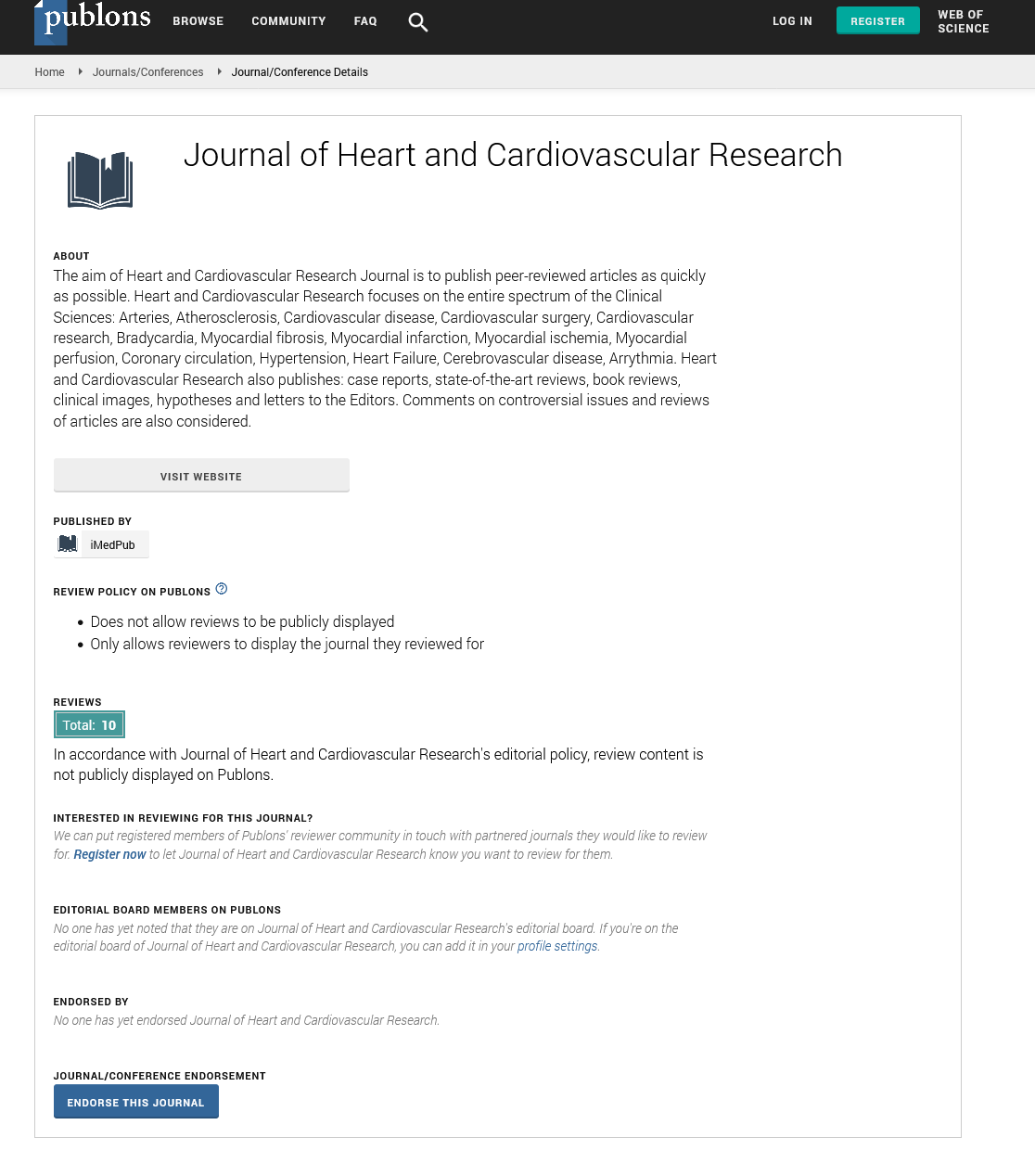ISSN : ISSN: 2576-1455
Journal of Heart and Cardiovascular Research
Which cells are involved in cardiomyogenesis in mammalian and zebrafish heart?
22nd International Conference on New Horizons in Cardiology & Cardiologists Education
March 07-08, 2019 Berlin, Germany
Galina B Belostotskaya
Sechenov Institute of Evolutionary Physiology and Biochemistry, Russia
Keynote: J Heart Cardiovasc Res
DOI: 10.21767/2576-1455-C1-001
Abstract
There is no clear evidence on which cells are able to renew the adult mammalian myocardium. Studying cardiomyogenesis in the heart of newborn mammals and adult zebrafish, many researchers have concluded that new cardiomyocytes (CMs) are formed by dedifferentiation and division of pre-existing mature CMs. In addition, it is supposed that mature CMs of zebrafish are divided throughout life, not only renewing the myocardium, but also regenerating it after injury. In turn, it has been shown that mature CMs of mammals are divided only in the first 5-7 days after birth, and then permanently lose this ability. Investigating the phenomenon of intracellular development of resident cardiac stem cells (CSCs) with the formation of “cellin- cell structures” (CICSs), we’ve found that transitory amplifying cells (TACs), being released after CICSs opening, are 2 times larger than the original CSCs (12-13 μm vs. 5-6 μm) and are able to divide and differentiate. We observed the presence of CICSs not only in the myocardium of adult mammals, but also in 18-day-old embryos and the neonatal rats. We found that CICSs, formed in the embryonic phase, not only provide TACs for embryonic cardiomyogenesis, but, opening immediately after birth, release large numbers of proliferating TACs to support neonatal cardiomyogenesis. Counting the number of mitotic cells and measuring their size showed that only small cells with D<13 μm are able to divide in the neonatal period. After that, their proliferation stops, and they transit from hyperplasia to hypertrophy. We demonstrated that adult myocardium of Danio rerio also contains CICSs. Upon opening, they release a large number of TACs, the dimensions of which are comparable to the dimensions of the cells that divide inside the myocardium of newborn mammals. We assume that specifically TACs, but not mature CMs, form new CMs in mammals and zebrafish throughout life.
Recent Publications
1. Belostotskaya G B and Golovanova T A (2014) Characterization of contracting cardiomyocyte colonies in the primary culture of neonatal rat myocardial cells: A model of in vitro cardiomyogenesis. Cell Cycle 13(6):910-918.
2. Belostotskaya G, Nevorotin A and Galagudza M (2015) Identification of cardiac stem cells within mature cardiac myocytes. Cell Cycle 14(19):3155-3162.
3. Filippov S K, Sergeeva O Yu, Vlasov P S, Zavyalova M S, Belostotskaya G B, Garamus V M, Khrustaleva R S, Stepanek P and Domnina N S (2015) Modified hydroxyethyl starch protects cells from oxidative damage. Carbohydrate Polymers 134:314–323.
4. Belostotskaya G B, Golovanova T A, Nerubatskaya I V and Galagudza M M (2018) Discovery of the phenomenon of intracellular development of cardiac stem cell – a new step in understanding of biology and behavior of tissue-specific stem cells. In the book “Evolutionary Physiology and Biochemistry: Advances and Perspectives”, Chapter 5:45- 60.
5. Belostotskaya G B, I V Nerubatskaya and M M Galagudza (2018) Two mechanisms of cardiac stem cell-mediated cardiomyogenesis in the adult mammalian heart include formation of colonies and cell-in-cell structures. Oncotarget 9:34159-34175.
Biography
Galina B Belostotskaya graduated from Leningrad State University and defended her thesis on a specialty “Radiobiology”. During late 15 years she has been studying the physiology of skeletal muscle cells and the behavior and cardiomyogenic potential of resident cardiac stem cells. Being the head of investigations she released 7 specialists and 2 graduate students. The works have been supported by the 11 Russian grants.
E-mail: gbelost@mail.ru
Google Scholar citation report
Citations : 34
Journal of Heart and Cardiovascular Research received 34 citations as per Google Scholar report
Journal of Heart and Cardiovascular Research peer review process verified at publons
Abstracted/Indexed in
- Google Scholar
- Sherpa Romeo
- China National Knowledge Infrastructure (CNKI)
- Publons
Open Access Journals
- Aquaculture & Veterinary Science
- Chemistry & Chemical Sciences
- Clinical Sciences
- Engineering
- General Science
- Genetics & Molecular Biology
- Health Care & Nursing
- Immunology & Microbiology
- Materials Science
- Mathematics & Physics
- Medical Sciences
- Neurology & Psychiatry
- Oncology & Cancer Science
- Pharmaceutical Sciences
